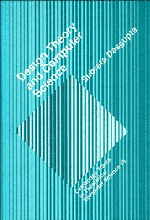Book contents
- Frontmatter
- Contents
- Preface
- Acknowledgements
- Part I The Architectonics of Design
- 1 The Inadequacy of Definitions
- 2 Design as the Initiation of Change
- 3 The Nature of Design Problems
- 4 The Form of Design Solutions
- 5 The Evolutionary Structure of Design Processes
- Part II Design Paradigms
- Part III Design and Science
- References
- Index
1 - The Inadequacy of Definitions
Published online by Cambridge University Press: 10 February 2010
- Frontmatter
- Contents
- Preface
- Acknowledgements
- Part I The Architectonics of Design
- 1 The Inadequacy of Definitions
- 2 Design as the Initiation of Change
- 3 The Nature of Design Problems
- 4 The Form of Design Solutions
- 5 The Evolutionary Structure of Design Processes
- Part II Design Paradigms
- Part III Design and Science
- References
- Index
Summary
The natural point to begin any discussion of design is its definition – that is, to state succinctly in a single sentence what it is that one does when one designs and what the end product is. Such an enterprise has been attempted in a variety of contexts including architecture, engineering, computer science, and the hybrid discipline of computer-aided design. As might be expected these definitions range from the very prosaic to the very abstract and each reflects quite clearly the specific perspective, tradition, and bias of its author. Invariably, such attempts to capture an entire human (or more recently, human–computer) enterprise within the bounds of a single sentence are unsatisfactory at the very least and fail abysmally at the worst.
One reason why definitions fail is the ubiquity of design as a human activity. As Simon (1981) has pointed out, anyone who devises courses of action to change an existing state of affairs to a preferred one is involved in the act of design. We have all been involved in devising such courses of action; hence from the very experience of living – or at least from the very experience of purposively controlling our lives – we have an intuitive idea of what design is. Thus, any single all embracing definition leaves us dissatisfied as much by what it excludes as by what it contains. For every definition one can point to instances of what is intuitively or experientially felt to be design but which have been excluded from the definition.
- Type
- Chapter
- Information
- Design Theory and Computer Science , pp. 3 - 5Publisher: Cambridge University PressPrint publication year: 1991



